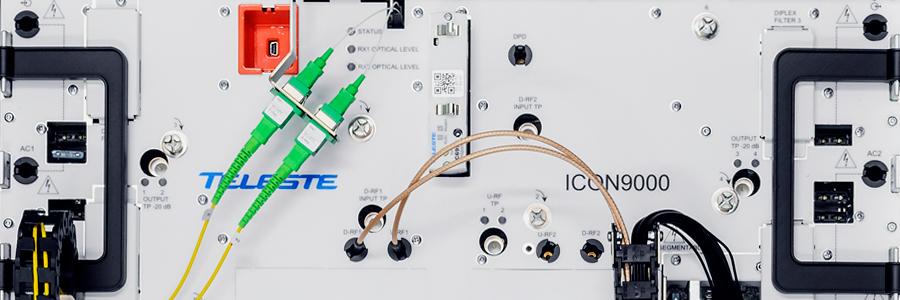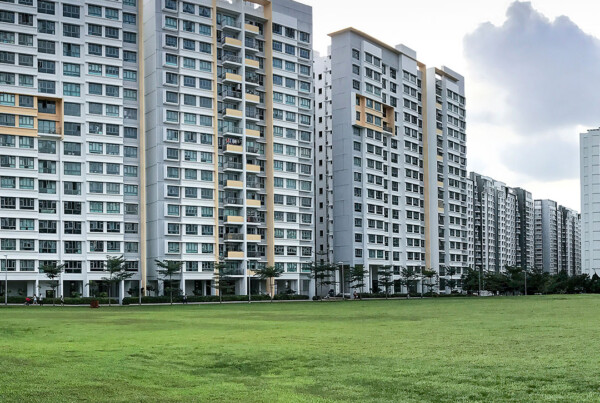When we meet cable operators and lay our ICON9000 node on the table, the first question is: Where are all the plug-in`1s? A short answer would be “We lost them in Europe.” Perhaps the answer should be explained in more detail.
The North American cable television industry exported innovations to Europe over many years and continue to do so. Many European networks were built by using devices that were tailored for North American networks. However, North American and European CATV devices started to differentiate in terms of size, features and performance.
A major reason for this was a requirement to bury cables in Europe and limited space for street cabinets whilst more harsh outdoor conditions were prevalent in North American markets. Differentiation advanced when Europeans made multiple massive network upgrades: first 1GHz and then 1.2 GHz networks. These upgrades motivated European operators to ask for fiber nodes and RF amplifiers without discrete plug-in modules since the beginning of the new millennium. Though diplexer filter modules were requested to be replaceable, all other plug-ins needed to be onboard.
Reasons were many fold. Some operators planned massive roll-outs, but resources to make manual field alignments were scarce. Therefore, nodes and amplifiers required auto-alignment functions allowing installment by non-CATV professionals. These functions enabled operators to use novices for basic installations and skilled cable television experts did more complex tasks. Novice CATV technicians didn’t even need to open lids, a welcomed benefit as opening may expose the electronics to harsh outdoor weather and physical harm.
Even operators who were not interested to use novices for installation work asked for onboard functionality, as it fostered fast auto-alignments expected by end-users of interactive services. While fast auto-alignments increased service uptime directly, the technology behind auto-alignments, namely electrical controls, continued to fuel other innovations. Transponders became more common in field device and in unison with electrical controls permitted remote configuration, adjustments and re-alignments; even remote node splitting was now possible because the signal routing matrix in our intelligent devices was and is managed remotely.
In practice, most truck rolls were eliminated and all seasonal visits became unnecessary.
Now operators had autopilot onboard and precise instruments to manage stormy weather from the comfort of their desk

For the moment, set aside the cost benefits due to eliminated truck rolls and manual work; can electrical auto-alignments lead to improved network performance in comparison to alignments that field technicians perform manually? For the sake of simplicity, let us make a bold assumption that technicians have exactly the right plug-ins in their tool box and all logistic hassle is absent. The answer is that the most skilled field technicians will elicit the same network performance but it takes more time. Unfortunately, in practice it is impossible to use the most skilled technicians to perform massive network roll-outs alone. Amount of work is simply exhaustive if we consider distributed access roll-outs or wide scale extended spectrum upgrades, and insurmountable if we discuss N+0 architecture roll-outs.
Auto-alignments and remote configuration require microprocessors in field devices. Does it make devices unstable, does it add failures in the field?
The concern is plausible as most of us think of computers when microprocessors are mentioned. Two decades of field experience and design improvements have eliminated all worries. Computers are unstable due to software and applications running in them. The logic of software that runs in our field devices has been tested in field conditions since the beginning of the millennium. In fact, the amount of microprocessor-equipped field devices exceeds one million in our case.
The software can be upgraded to our intelligent fiber nodes and amplifiers without hard reboot and service breaks. Our software has nothing to do with the software that runs in personal computers; if you feel safe sitting in a commercial airplane, you will feel extremely safe using our rugged software. We launch new software packages frequently, not because of bugs but because of new functions requested by operators. To give you a practical example, I could name power-save functionality using electrical controls, as power is nothing without control.
Plug-ins had their time and place, perhaps they have complicated some tasks but they did what they needed to do. But the world is changing, and we must change with it, learn new methods and unlearn methods that paralyze fast-distributed access network roll-outs.
Although my text (correctly) gives the impression that I’m against the use of plug-ins, I want to mention one exception. Diplexers should be plug-ins, the hardwiring frequency split between upstream and downstream does not make sense. But could the split frequency be changed remotely? Unfortunately, all possible permutations make that approach expensive, although not impossible, as this compact amplifier example shows.
Stay tuned and on board!
About the author
Steve Condra, Director, Engineering and Product Management of Teleste Intercept
Steve Condra has more than 30 years of experience in the Telecommunication industry. He spent 16 years with AT&T, Bell Labs, and Lucent Technologies primarily in outside plant design, manufacture, and installation. In addition, he spent 18 years in the Cable TV industry with Scientific Atlanta, Cisco, and Teleste primarily in HFC infrastructure including R&D and Product Management. Steve earned a Bachelor’s and Master’s degree in Mechanical Engineering from the University of Missouri.
Teleste Intercept
offers a wide range of intelligent optical nodes and amplifiers, and software for Intelligent Network management. We also have long-term experience in network architectures and their design, planning, installation and maintenance.
If you wish to discuss more about our solutions and their benefits, please contact sales@telesteintercept.com





